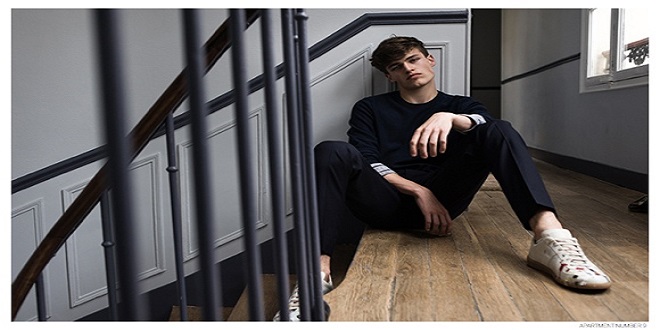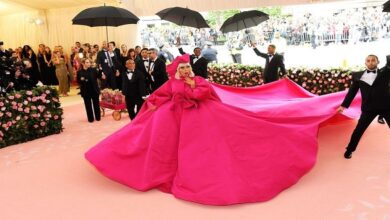
Like Hausmann, Schwitters, Rauschenberg, and the Arte Povera artists, Margiela chose debased and abject materials and deconstructivist methodologies to draw attention to a new type of anti-fashion. In a very objective, scientific manner, he analyzed, dissected, and recontextualized his garments.
As if working with him in a laboratory, his assistant designers wore knee-length lab coats, an eccentric mode of dress that was copied by his devotees worldwide. Taking a postmodernist view of fashion design, he worked with a microbiologist in 1997 to grow mold and bacteria on the surface of a collection of garments, which was intended to eat away at the fiber of the FRAMING FASHION: THE ARTISTS WHO MADE CLOTHES 63 textiles when placed outside in the weather for a period of time.
Hussein Chalayan: techno-design
A paradox is thereby created, where the clothing can be remembered as objects of beauty whilst they are gradually becoming objects of disdain. This theme was common in the 1960s conceptual art movement when an artist might leave pieces of stale bread on the outside window sill and photograph them at various stages of decomposition. Margiela’s decomposing installation of work, entitled 9/4/1615 and exhibited in the sculptural court of the Museum Bojimans Van Beuningen in Rotterdam in 1997, forced Ingrid Loschek (2009) to speculate that Margiela was comparing this process of the natural cycle of creation and decay to the consumer cycle of buying and discarding.
Some read the installation as a comment on the issue of consumerism for consumerist’s sake; others suggested that his work spoke about the cycle of fashion by symbolically alluding to the deconstruction of couture. At this time, the relevancy of couture was being challenged, and the world was experiencing a period of rapid, destabilizing change. A postmodernist reading would suggest that Margiela presents many different layers of meaning in his work and would advocate that individual viewer should respond with multiple interpretations. Fashion theorist Caroline Evans describes his work as being ‘much more experimental and “cutting edge” than that of many contemporary artists who use fashion motifs in their work.
Margiela experimented with the paradoxical concept of the ‘inside becoming the outside’ or at least being reproduced to appear to be part of the exterior garment. One of Margiela’s most sought-after pieces by museum curators was one in which he borrowed the covering of a tailor’s dummy and recontextualized it into a waistcoat made of linen canvas, which he then re-draped over the original mannequin. This, of course, takes on a surrealist perspective—a contradictory vision. The designer also deconstructs and reconstructs ideas relating to fashion detritus.
When secondhand or throwaway clothing is given a new lease on life, it contradicts the traditional elements of glamour, beauty, and novelty. Undoubtedly, he appropriated this notion from the Japanese contemporary fashion designers whose work reflects the notion of wabi-sabi or finding beauty out of ugliness. Margiela also rejected the age-old concept of the ‘artist-as-genius’ and refused to become a celebrity designer, never appearing on the catwalk, shunning public appearances, and social aggrandizement of any kind in order to retain his anonymity. Similarly, both Picasso and Braque negated the idea of the uniqueness of the artist’s originality as well, by signing each other’s work in the early 1910s, when they were developing their objective concepts of analytical cubism.
Last word
Like the Dadaists, Margiela worked collaboratively with his team at the Maison Martin Margiela and would not respond individually to queries or correspondences. He retired as the head designer of the label in 2010, following retrospective exhibitions of his work in Antwerp, Munich, and London.
Discover the essence of crafting captivating magazine content, delving into the art of storytelling and visual aesthetics. Uncover the secrets to engaging readers through compelling narratives and striking imagery, elevating the impact of each page turn. Master the intricacies of magazine creation to resonate with diverse audiences and leave a lasting impression.




